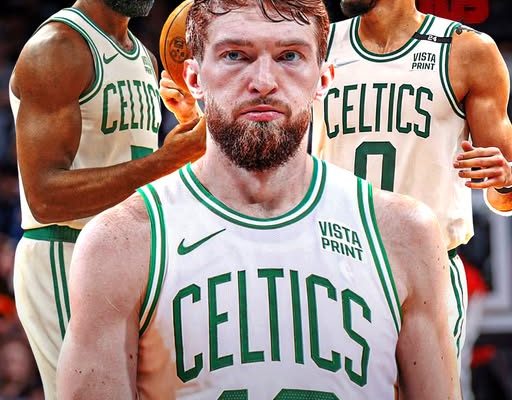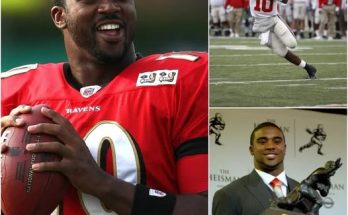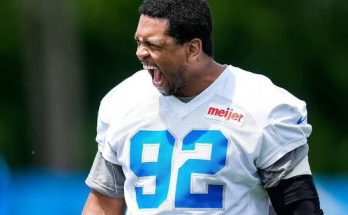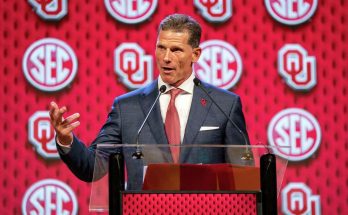The Boston Celtics have found themselves at a surprising and critical juncture following their latest playoff disappointment. What began as a promising title push ended in familiar frustration, prompting questions about the long-term viability of their current core. Jayson Tatum’s untimely injury and the team’s inability to adapt under pressure have reignited debates about whether it’s time to move on from the status quo. Amid the uncertainty, a bold and unexpected trade idea has captured the imagination of both fans and analysts: Domantas Sabonis to the Celtics. While still speculative, the notion of acquiring Sabonis isn’t just a pipedream—it represents a potential pivot in strategy and identity for a Celtics franchise looking to remain among the NBA elite while evolving for a new era.
Domantas Sabonis, a three-time All-Star and one of the league’s most consistent big men, has quietly become one of the most valuable players in the NBA. His combination of passing, rebounding, toughness, and low-post scoring make him a unique asset—especially for a team like Boston that has long lacked a truly dynamic presence in the frontcourt. Unlike centers who simply protect the rim or stretch the floor, Sabonis is a hub. His playmaking ability from the high post and elbows would fundamentally shift how Boston attacks defenses, allowing for more fluid offense, especially if the team is forced to move forward for an extended period without Jayson Tatum.
The Celtics’ core of Tatum, Jaylen Brown, Derrick White, and a cast of valuable role players like Al Horford, Kristaps Porziņģis, and Jrue Holiday has been one of the most competitive units in the NBA for the past several seasons. But repeated failures in the Eastern Conference Finals and the NBA Finals suggest something is missing. While Tatum and Brown are both supremely talented, the overlap in their skill sets, combined with the lack of a true interior playmaker, has limited Boston’s offensive versatility in high-stakes games. That’s where Sabonis comes in. He wouldn’t just be a complementary piece—he’d be a system-changer. By orchestrating the offense from the post, initiating handoffs, setting hard screens, and crashing the boards with relentless energy, Sabonis would offer the Celtics an identity they haven’t had in years: interior dominance.
The timing of this speculation is also noteworthy. Tatum’s injury—reportedly more serious than initially disclosed—could keep him sidelined for the early portion of the season. Even if he returns sooner, Boston cannot afford to waste any more seasons in a league where windows close quickly. With Eastern Conference rivals like Milwaukee, Philadelphia, and New York retooling, the Celtics must stay aggressive. A move for Sabonis would not just signal intent—it would be a declaration. That they’re no longer content being “almost there.” That they’re willing to make bold, potentially franchise-altering decisions in pursuit of a title.
The question then becomes: what would it take to land Domantas Sabonis from the Sacramento Kings? The Kings, for their part, are a team caught between two timelines. They’ve returned to relevance behind De’Aaron Fox and Sabonis, but after a disappointing playoff showing, whispers have begun to surface about their long-term ceiling. Sacramento may eventually be faced with a difficult decision—pay Sabonis another massive extension or trade him while his value is at its peak. If Boston can package a combination of draft capital, young talent like Payton Pritchard or Sam Hauser, and perhaps even a high-profile player such as Porziņģis or a sign-and-trade involving Derrick White, they could pique Sacramento’s interest. The Celtics have assets, and the willingness to use them.
From a basketball standpoint, a Sabonis acquisition would immediately improve Boston’s half-court offense. Under head coach Joe Mazzulla, the Celtics have leaned heavily into three-point shooting and isolation sets, often stagnating when their stars get bottled up. Sabonis would provide a release valve—an interior fulcrum around whom actions could be built. Imagine Sabonis at the elbow, Brown curling off screens, shooters dotting the perimeter, and defenders scrambling to keep up. The ball movement would improve, and so would the team’s offensive efficiency. Boston has long relied on hero ball in crunch time; Sabonis offers a chance to win by committee.
Defensively, Sabonis does come with some limitations. He’s not a shot-blocker like Robert Williams III, nor does he have the mobility of Horford or the length of Porziņģis. But what he lacks in elite rim protection, he makes up for with intelligent positioning, strong hands, and hustle. In a well-designed defensive system—especially with Brown and Jrue Holiday hounding perimeter players—Sabonis could be more than adequate. Plus, Boston would still retain the flexibility to play situational lineups, switching in more traditional rim protectors when needed.
Another reason the Celtics might consider such a bold move is age and future stability. Al Horford, for all his experience and leadership, is nearing 40 and can’t log heavy minutes anymore. Porziņģis, while skilled, has battled persistent injuries and inconsistency. Sabonis, at just 28, is entering his prime and has proven to be incredibly durable. Acquiring him would not just be a move for this season, but an investment in the team’s competitive window over the next several years. In many ways, Sabonis could become the new face of the Celtics if Tatum’s health continues to be a concern or if the front office ultimately decides to part ways with one of the current stars.
Financially, the move would not be without risk. Sabonis is signed through 2027 on a hefty extension, and taking on his contract would require some maneuvering. The Celtics are already pushing the limits of the luxury tax, and adding another max-level player would increase their payroll significantly. But the NBA’s new collective bargaining agreement has not dissuaded teams from spending—especially those in win-now mode. The Celtics’ ownership has proven willing to spend, and a Sabonis trade would be the kind of all-in push that signals championship-or-bust intentions.
The emotional component cannot be ignored either. Celtics fans are fiercely loyal to their stars, and moving on from a player like Derrick White or even Porziņģis would not be met with universal approval. But Boston is also a city that understands legacy and what it takes to win. Championships are the standard. Larry Bird. Bill Russell. Paul Pierce. These aren’t just names—they’re expectations. Bringing in a player like Sabonis doesn’t guarantee a title, but it brings the Celtics one step closer to assembling a roster that can beat the best in a seven-game series.
Of course, all of this remains hypothetical—at least for now. The NBA offseason is a constantly shifting puzzle, full of smoke screens and misdirection. But the very fact that a Sabonis-to-Boston rumor has emerged—and gained traction—reveals something about where this team is mentally. They’re not satisfied with being good. They want to be great. And greatness often requires risk.
Should the Celtics ultimately pull the trigger on a Domantas Sabonis trade, they would be betting not just on his talent, but on a philosophical shift. Away from isolation and perimeter-reliance. Toward ball movement, inside-out offense, and physicality. It would be a gamble—but one grounded in strategy, vision, and urgency. Because in the modern NBA, standing still is falling behind.
If Jayson Tatum returns healthy and the Celtics have Sabonis anchoring the middle, the duo could form a devastating inside-out tandem. Brown’s slashing, Holiday’s defense, and the shooting depth already in place would round out what could be the most balanced roster in the East. The Celtics, already close, might finally have the missing piece. Whether Sacramento is willing to talk is another matter—but Boston appears ready to listen, and that in itself is a sign that something big could be coming.



